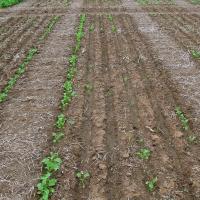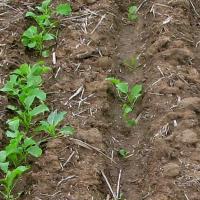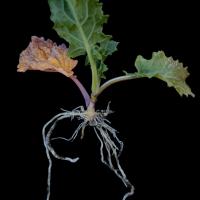Contributing factors
Plant species
- Tap rooted species are more severely affected.
Fertiliser type:
- Fertilisers with a high salt index (particularly muriate of potash).
- Urea has a low salt index but produces ammonium carbonate when it breaks down, which causes alkaline conditions around the fertiliser granules. This may cause the production of ammonia gas which is highly toxic to germinating seeds.
Fertiliser rate:
- Higher rates increase toxicity risk.
- Seeding using wide rows increases the concentration of fertiliser near the seed.
Proximity to the seed:
- With placement closer to the seed, contact between high concentration solutions and the seedling is more likely
- With no-till practices, seed and fertiliser are often placed close together, which increases the chance of germination being reduced by toxicity. Possibly counteracting this is less disturbance and generally more compact, better moisture-holding soil near the seed, particularly if press wheels are used.
Soil type and moisture content:
- Toxicity levels are highest when seeding into moist, light sands and when seeding in any soil type is followed by a warm dry period.
- Toxic effects will be reduced or eliminated when effective rains occur immediately after seeding. Rain dilutes the salt solution, dissolving ammonia and removing fertiliser from around the seed by leaching
- Greater toxicity has been seen where the seedbed has been left loose and dry and thus holds less moisture to dilute the concentrated salt solution from the dissolving fertiliser.




